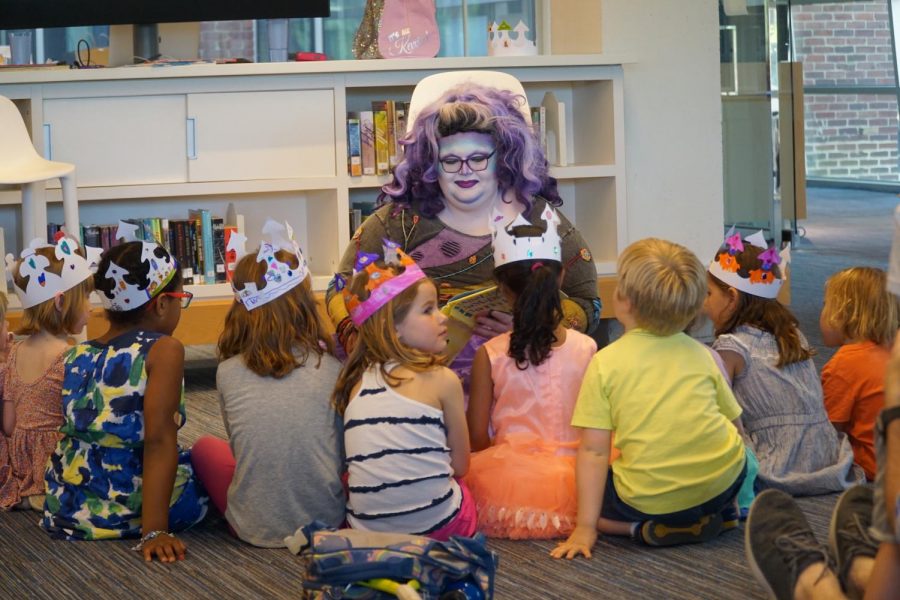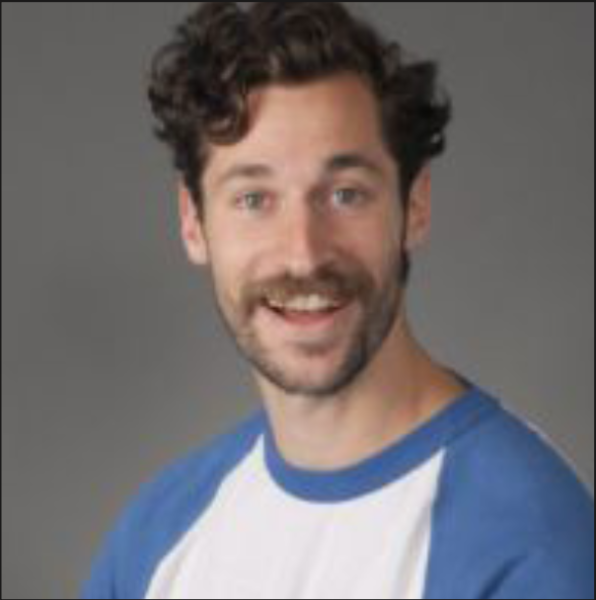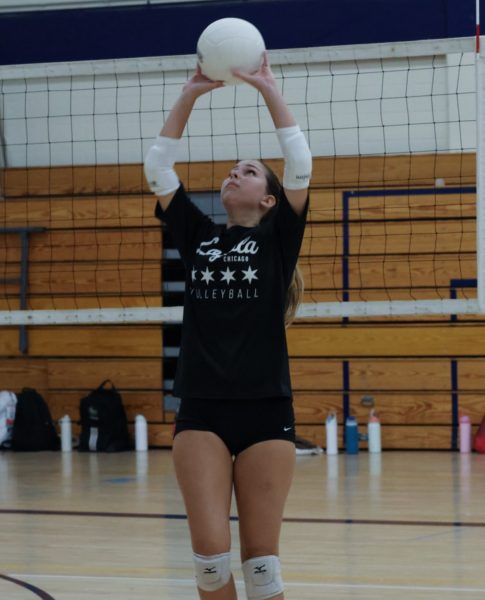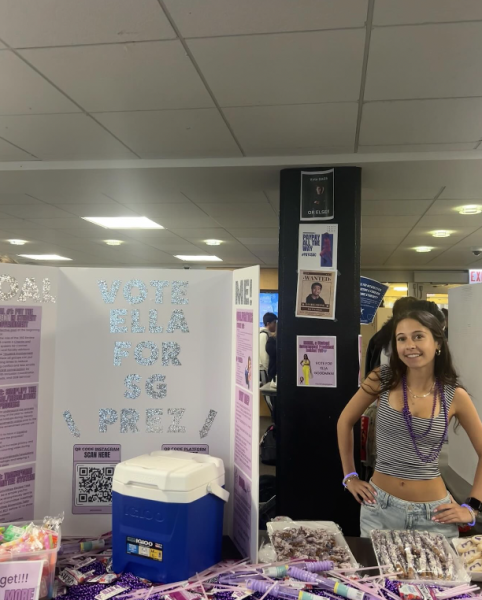Fit For a Queen
Drag Queen Story Hour at Parker
Photo credit: Isaac Warshaw
Drag Queen Story Hour is a national organization which strives to give “kids glamorous, positive, and unabashedly queer role models.”
This isn’t an average Friday afternoon gathering.
Over a dozen lower schoolers piece together white paper crowns, bedazzling the surface with jewels and gold designs. At 3:30, they gather on the library floor around a stool occupied by a purple-haired, wig-wearing performer, while many parents, teachers, and a few older students watch from the chairs and couches further back. Kevvie Vida crosses her legs as she prepares to read, her long purple skirt lifting slightly to reveal her rainbow converse. Her face is painted blue, white, and purple, and she laughs with the audience as she cracks open the picture book, ‘Red: A Crayon’s Story,’ by Michael Hall to kick off Parker’s first ever Drag Queen Story Hour.
Parent Dianne Berin attended the Story Hour with her first grade son, Zach Berin. “The idea of empowering, that boys don’t have to necessarily bend to gender norms, is really important,” Berlin said. “I wanted my boys to have the experience.”
JK and First Grade Parent Lauren Bergeron agreed. “Exposure to diversity is always something I’m looking for,” Bergeron said. “I’ve been looking for one in the city for a while, but it’s kind of a moving target.”
As an active participant in the library community outside of Parker, Upper School Librarian Annette Lesak noticed that public libraries had hosted Drag Queen Story Hours in the past few years. The Shapiro Ballroom regularly hosts the Story Hour for anyone in the community, and often a fraction of their proceeds will go towards Center on Halsted or another LGBTQ organization. “I had a lightbulb moment and thought, why not have one at Parker?” Lesak said. “We pride ourselves in being an inclusive community, we take part in the Pride Parade, and I thought it would be a wonderful thing to bring to the community.”
While watching her first Story Hour at the Shapiro Ballroom, Lesak saw the performer she eventually contacted who goes by the name Muffy Fishbasket. Though Muffy was unable to attend Parker, she put Lesak in touch with two other drag performers, Mikki Mirage, a play on “Nicki Minaj,” and Kevvie Vida, the lead actor of Friday’s performance. According to Lesak, Vida is primarily focused on body positivity, and both perform drag all around the city.
Vida first began working for Drag Queen Story Hour after hearing about it from friends who had worked there. After she told them she was interested, she was invited to be a regular cast member when the official Story Hour chapter in Chicago started. Vida’s priority is showing the attendees a good time and leaving them entertained and happy.
Like Berin and Bergeron, Lesak hopes the Story hour will provide students with exposure to different people and normalize gender fluidity. “It’s really important to know people who identify as queer and know people who express their gender in ways that we may not see every day,” Lesak said. “We want to normalize gender expression as not the thing we can fit into a box.”
Vida’s first book, ‘Red: A Crayon’s Story’ focused on learning more about oneself and acceptance, an essential theme in Drag Queen Story Hours. Minutes later, after a round of applause and a closing snap of the cover, Vida transitioned to her second book, “This Day in June,” by Gayle E. Pittman about the Pride Parade.
According to Lesak, the stories are more about self-love, not necessarily about the LGBTQ experience. While there were picture books in the collection that reflect the queer experience, the focus of the Story Hour was finding out who you are and self-acceptance.
Lesak believes that drag, in particular, is especially crucial for boys to show them an alternate expression of masculinity. “A man dressing as a woman, wearing makeup as an over the top expression of femininity but still being a man, is important for young men and boys to see different ways of being a man,” Lesak said. “It teaches them there’s not just one way to be a man.”
According to Lesak, Parker’s community has liberties as a progressive private school that are less restrictive than that of a public school, which allows for the resources to participate in events. There are enough people in the building, Lesak said, who feel as though LGBTQ rights and recognition are fundamental. “We have families that are same-sex families, same-sex faculty and staff members, and it has certainly become more and more socially acceptable to celebrate that,” Lesak said. “As a school community, it is one of our bigger priorities to make people in the queer community feel celebrated and accepted here.”
Unfortunately, many public libraries in Chicago and the suburbs are facing threats and challenges for their involvement in Drag Queen Story Hour. Protestors, according to Lesak, feel as though the events are “brainwashing children” or “proselytizing a lifestyle that is morally wrong.” For Lesak, this misconception is tragic. “Our Drag Queens aren’t coming to convince kids to be gay,” Lesak said. “These people who are not okay with the LGBTQ community are shutting down acceptance.”
For both Bergeron and Berin, the message of Drag Queen Story Hour was crucial. “It’s about challenging gender stereotypes,” Bergeron said, “and redefining what it means to be beautiful.”











